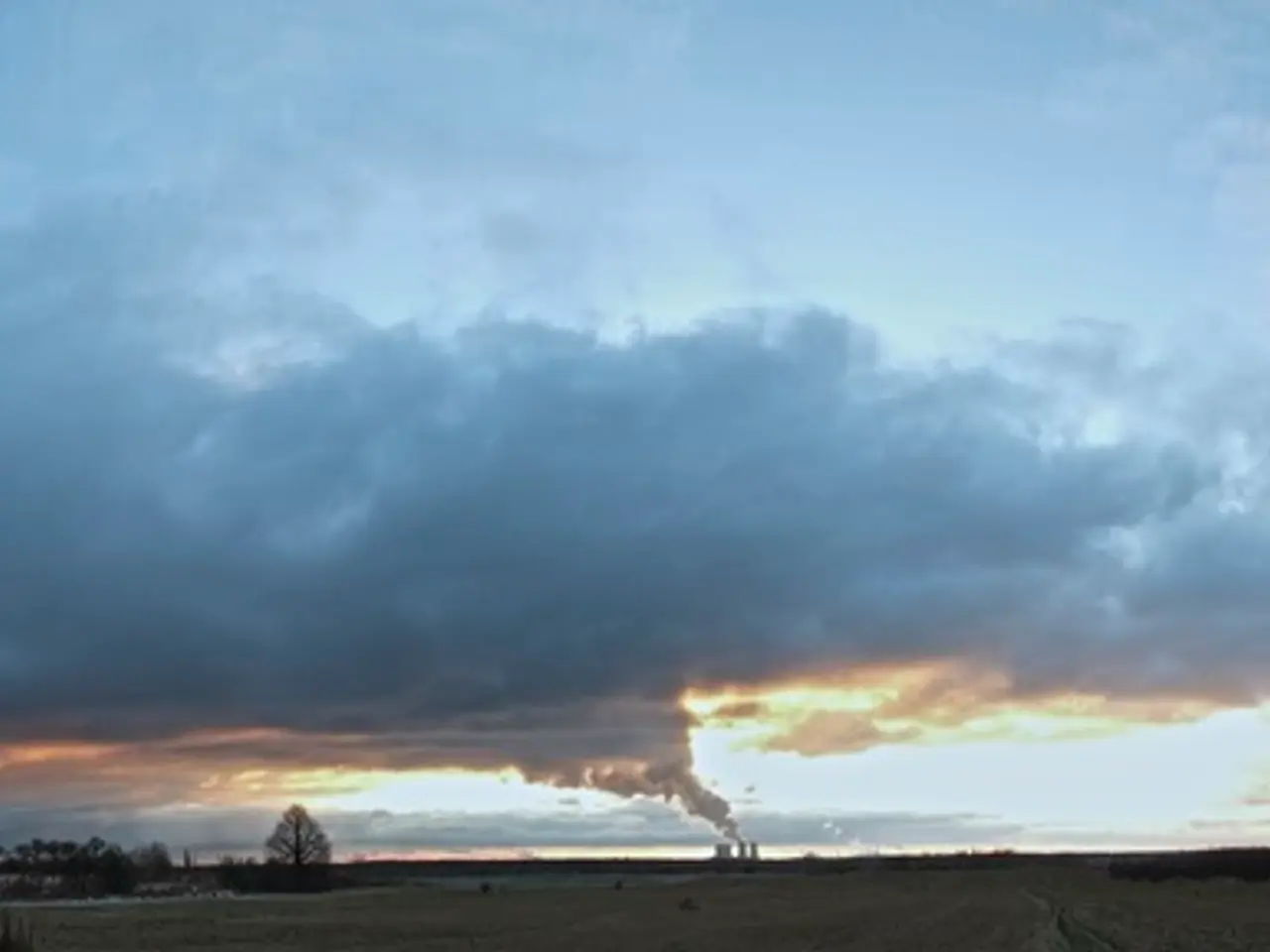Federal Financing for Citizen-led Air Quality Testing: Could This Bridge Existing Monitoring Shortfalls and Contribute to Cleaner Atmosphere?
In an effort to address environmental inequities and promote public health, the Environmental Protection Agency (EPA) has launched a citizen science initiative for air quality monitoring in underserved communities. This innovative programme presents both benefits and challenges as it democratises environmental data collection and empowers local residents to take action against pollution.
One of the key advantages of this initiative is enhanced local data collection. Low-cost, real-time air quality monitors have been placed within communities, allowing for the collection of hyper-local pollution data such as harmful particulate matter (PM2.5) and nitrogen dioxide (NO2) levels. This localised data offers a better understanding of specific neighbourhood air quality concerns, providing more granular insights than traditional monitors spread thinly across regions.
Community engagement and empowerment are also significant benefits. By involving citizen scientists, the EPA fosters public participation in environmental monitoring, raising awareness about air quality issues and empowering residents to advocate for healthier air in their neighbourhoods, particularly those underserved or historically marginalized. Data collected is often made publicly accessible through live maps and online platforms, increasing transparency and helping everyday community members who seek reliable air quality information.
Support for environmental justice is another key aspect of the programme. The initiative specifically targets underserved, low-income, or predominantly minority areas that historically have faced disproportionate pollution burdens, thereby addressing environmental inequities and contributing to informed policymaking for these communities.
However, challenges related to data reliability, technical capacity, and sustainable engagement must be addressed to maximise impact and support equitable environmental outcomes. Not all air quality monitors measure the same pollutants or with the same precision, leading to conflicting advice or confusion about pollution levels and health risks. Ensuring wide and equitable coverage remains challenging, as installation, maintenance, and consistent data reporting require resources and ongoing community involvement.
Communities involved may need support to correctly install, operate, and analyse monitor data. This requires education, training, and technical assistance to fully realise the benefits of citizen science efforts, possibly necessitating partnerships with academic or nonprofit organisations. Integrating data from citizen science monitors into formal environmental assessments and policymaking is another challenge that must be addressed.
The community of Sulphur, Louisiana, located in the state's petrochemical corridor, has long suffered from toxic emissions without adequate monitoring from state agencies. More than 100 U.S. counties with unhealthy air lacked the necessary monitors to assess pollution levels, according to a 2020 report by the Natural Resources Defense Council (NRDC). In Louisiana, Governor Jeff Landry signed legislation in May 2023 that prohibits community air quality data from being used in regulatory or legal cases.
Despite these challenges, the potential of community-led air monitoring is significant in promoting a more inclusive approach to environmental justice. The EPA awarded $53 million in grants to 133 community groups in 2022 to set up their own air quality monitors. Darren Riley, co-founder of Just Air Solutions, stated that the EPA's effort has given residents a feeling of empowerment.
However, ongoing support, better integration of data into regulatory frameworks, and overcoming legislative barriers are necessary for the EPA's citizen science initiative to make a difference. The future of air quality monitoring may lie in the hands of those most affected by pollution. Community-driven air monitoring could be the key to more effective environmental justice efforts, with residents in funded communities starting to think of air quality monitoring as "our data."
The Clean Air Act was passed decades ago to ensure public health is safeguarded from harmful pollutants. However, there are approximately 4,000 air quality monitors placed nationwide, but many communities of colour and underserved regions lack adequate monitoring. Air Alliance Houston has been gathering air quality data since 2018, but their data has been largely ignored by the Texas Commission on Environmental Quality (TCEQ).
In conclusion, the EPA’s citizen science initiative represents a significant shift toward empowering citizens to take charge of their own environmental health. By providing communities with the tools to track pollution and raise awareness, the initiative is fostering public participation, promoting transparency, and addressing environmental inequities. However, ongoing challenges must be addressed to ensure the initiative's success and the health and well-being of underserved communities.
- Enhanced local data collection is key to the EPA's initiative, as low-cost air quality monitors gather hyper-local pollution data like PM2.5 and NO2 levels.
- Community engagement is beneficial, as it raises awareness about air quality issues and empowers residents to advocate for cleaner air.
- Data collected is often made publicly accessible, increasing transparency and helping citizens access reliable air quality information.
- Environmental justice is a focus, as the initiative targets underserved, low-income, or minority areas facing disproportionate pollution burdens.
- Data reliability, technical capacity, and sustainable engagement pose challenges that must be addressed for equitable environmental outcomes.
- Education, training, and technical assistance may be required for communities to correctly operate and analyze monitor data.
- Collaboration with academic or nonprofit organizations could help address these needs.
- Integrating citizen science data into formal environmental assessments is another challenge to overcome.
- Communities such as Sulphur, Louisiana, have historically lacked adequate monitoring from state agencies for toxic emissions.
- The Clean Air Act was passed decades ago to protect public health, but many communities of color and underserved regions still lack adequate air quality monitoring.
- Air Alliance Houston has been gathering air quality data since 2018, but their data has been largely ignored by the Texas Commission on Environmental Quality (TCEQ).
- The initiative's success and the health of underserved communities depend on ongoing support, better data integration, and overcoming legislative barriers.
- Residents in funded communities are beginning to view air quality monitoring as "our data," signifying a shift toward citizen empowerment.
- The future of air quality monitoring may lie in the hands of those most affected by pollution, with community-driven air monitoring playing a key role in effective environmental justice efforts.




